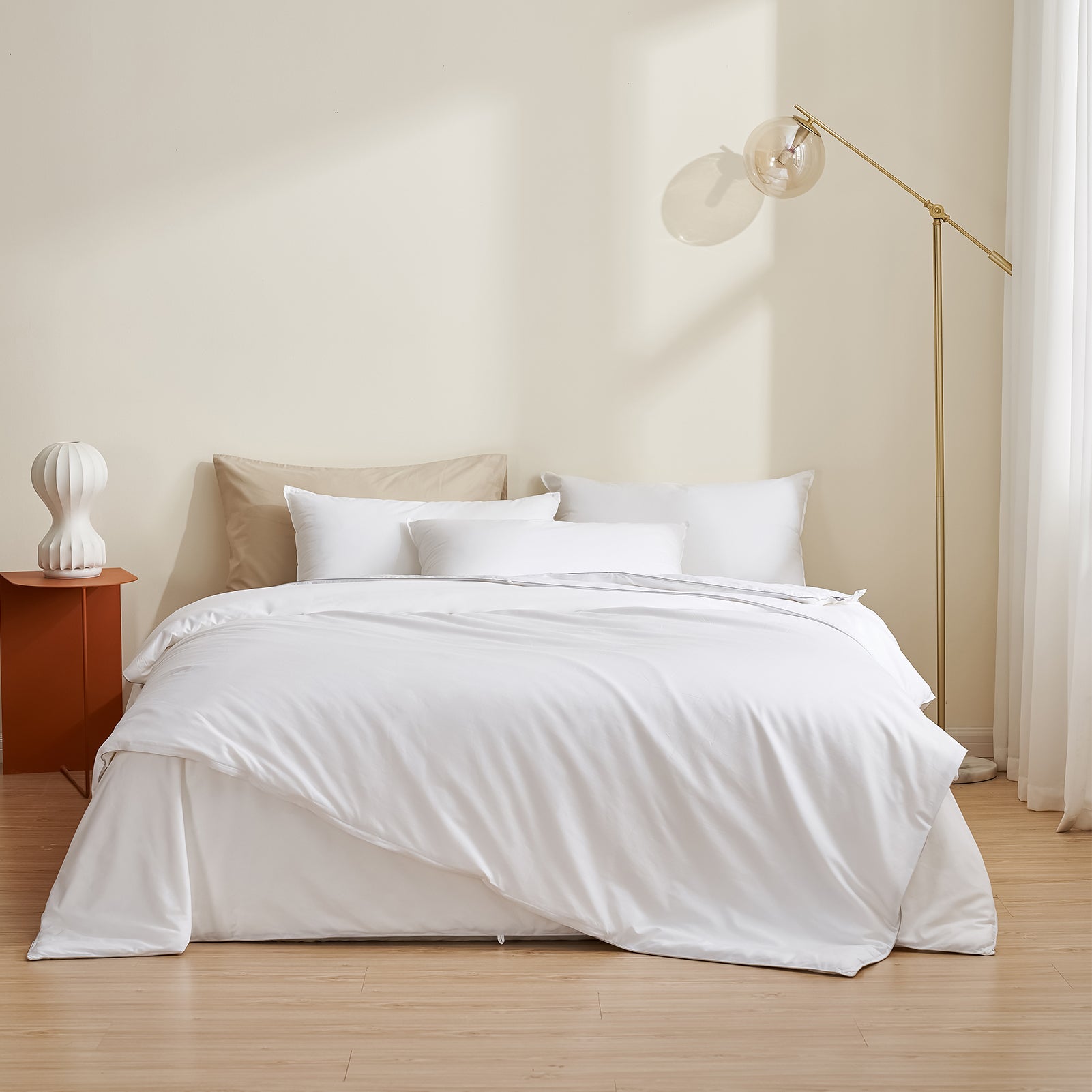I've written a number of pieces in the last few weeks comparing silk to various everyday materials. This post will be the last in a series that examines the different distinctions between silk and wool and how these distinctions may influence your purchasing choices.
Wool is a clear distinction from the other fibers I previously stated since, like silk
duvet What distinguishes silk from wool, then?
Silk vs Wool:Warmth
You should be able to identify the fundamental distinction between wool and silkworms based on the origins of both: warmth. While silkworms cocoon themselves to protect themselves from injury while undergoing metamorphosis, sheep develop wool primarily to keep them warm. When wool and silkworms are developed into blankets and comforters, these functions continue to exist.
An excellent heat insulator is wool. People can stay warm in cold weather because of the inherent air pockets found in wool, which efficiently trap the heat produced by the body inside. Wool is used to make sweaters because of this.
Silk is excellent at retaining heat. The majority of silk quilts and blankets are less dense than wool quilts, thus they don't keep you as warm. Silk, on the other hand, does a better job of encouraging air exchange (more commonly breathing) between the sides of the comforter, which helps to expel excess heat when needed and keeps the temperature around the body at a comfortable level. This is because of the structure of the silk fibers and the thinness of most silk products.
Silk vs Wool:Comfort
Wool is not particularly light, but silk is still much lighter. A lighter comforter makes it easier to shift over while you sleep and encourages blood flow all night long.
Silk and wool both have a silky texture. Wool is stronger while silk is thinner and has a more airy feel. It all comes down to personal preference in this category.
Silk vs Wool: Feeling
The sensation of silk against the skin is well captured by the adjective 'silky'. The scaly surface of wool fibers, as opposed to the smooth surface of silk fibers, gives wool fabric a coarser feel. Additionally, wool can easily break on the surface due to the structure of the fibers, resulting in broken strands of wool that may itch the skin.
Silk vs Wool: Health
Since sheep have skin to protect them from bacteria, mildew, and insects, wool is not particularly resistant to any of these. On the other hand, because silkworms depend on these properties to protect themselves, silk is inherently resistant to germs and mold and repels the majority of home bugs. Silk has a tendency to stay clean because of this, and it also prevents some of the most prevalent home allergens from entering your bedroom.
Silk vs Wool: Maintenance
Wool generally requires more cleaning care and maintenance due to the factors listed in the hygiene section, whereas silk is easier to clean. Wool and silk must be dry cleaned if they are to be thoroughly cleaned. Silks with low Momme weights are more fragile than wools and do not wear well, which is why we recommend silks with a Momme weight of 19 or higher.
To summarize, both silk and wool are excellent textiles that are well worth purchasing. If you are more concerned with warmth and do not mind overheating, wool is a better option. Silk is a better choice if you want something that can be worn all year and is lighter and more hygienic.



